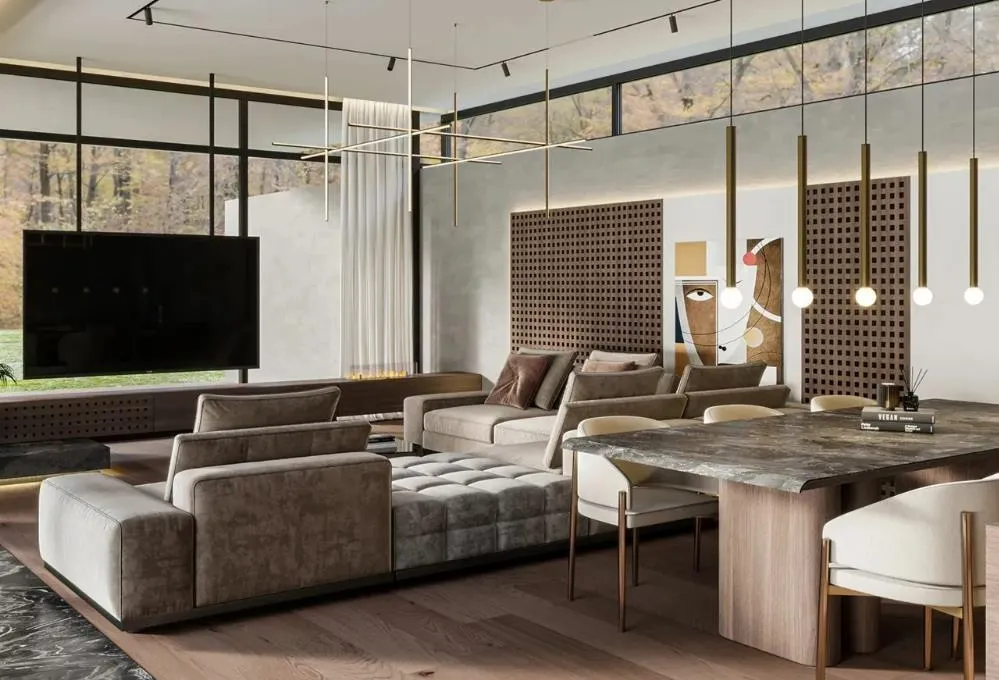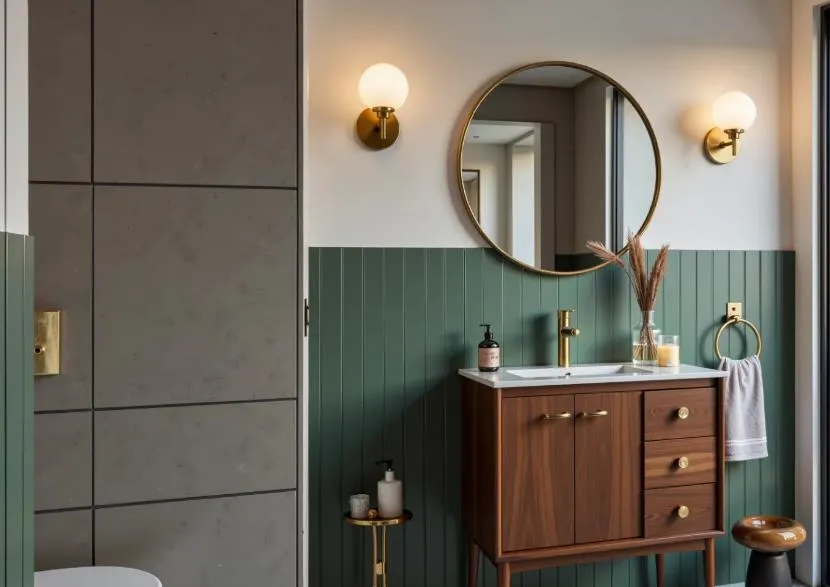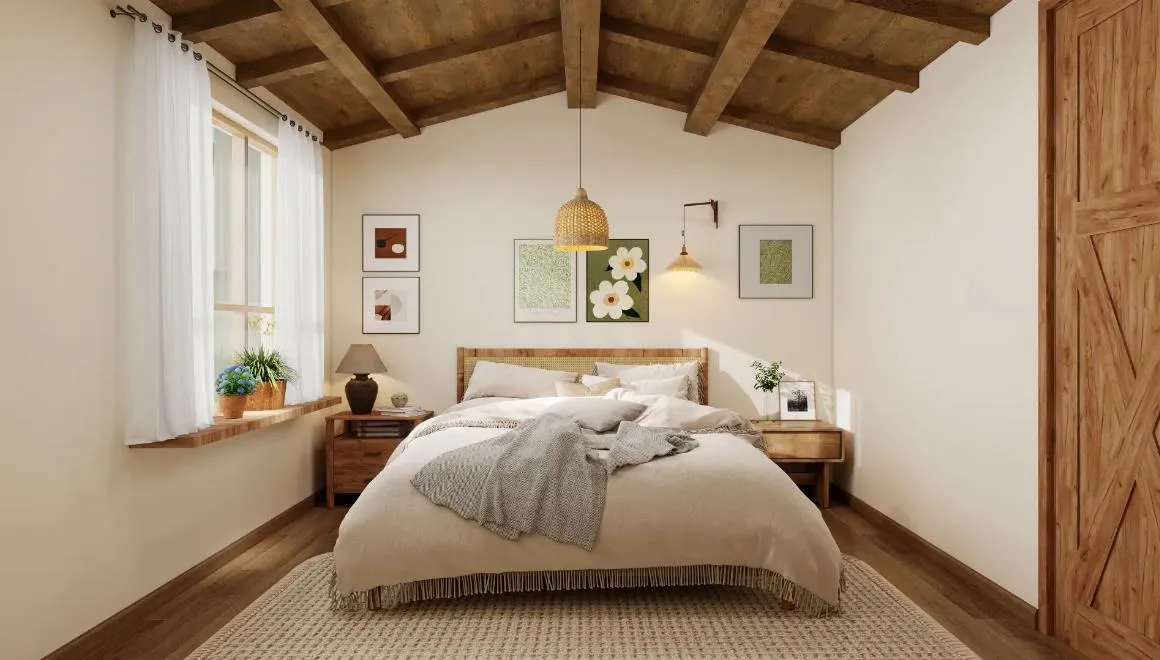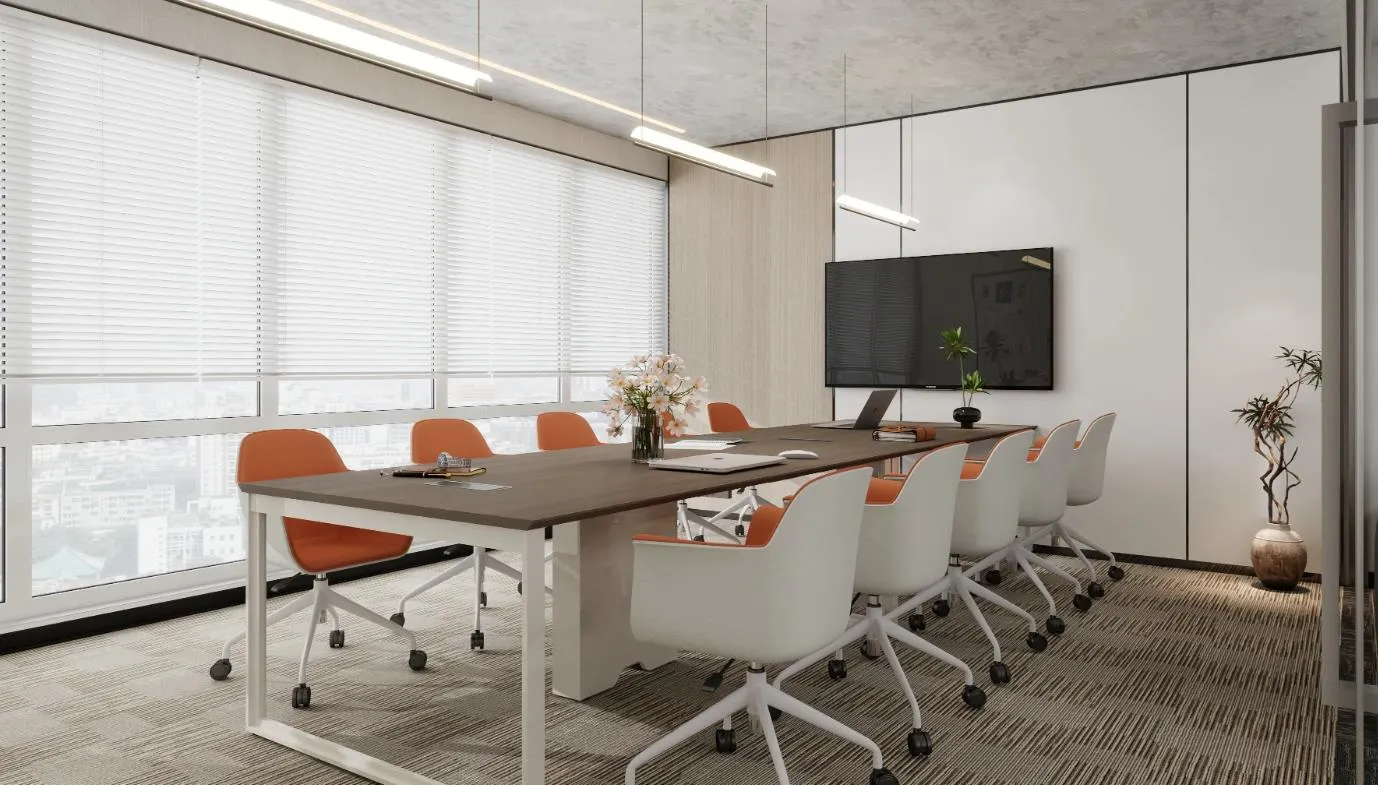15 Best And High End Office Interior Design Ideas 2025
In the modern workplace, office interior design isn't just about aesthetics; it's also about efficiency and atmosphere. A well-designed office interior can enhance employee focus and creativity, while also making the space more functional. Through clever office interior design, it can also reflect corporate culture, strengthen teamwork, and enhance a professional image. If you're looking for inspiration to optimize your office space or renovate a new one, this article will help you avoid many mistakes and create your ideal workspace.
1. Open Space Design
Open office interior design emphasizes a sense of spatial flow and a collaborative atmosphere. High partitions are eliminated in favor of low-slung workstations or shared tables, facilitating communication between employees. Soft lighting and a simple color palette create a spacious and bright environment. Open design not only reduces wasted space but also promotes information sharing and team cohesion, making it particularly suitable for innovative, internet-based, startup-based businesses, and low-budget small office interior design.

2. Natural Lighting Design
Natural light is a key element in office interior design. Introducing natural light through large floor-to-ceiling windows, glass partitions, or skylights can effectively reduce energy consumption from artificial lighting while improving employee mood and productivity. Natural light, combined with light-colored walls and bright furniture, can create a more airy and warm atmosphere in the office. This concept is often adopted in commercial office interior design, significantly reducing lighting costs.

3. Ergonomic Furniture Design
Modern office interior design emphasizes ergonomics, featuring height-adjustable office chairs and monitor arms. This helps employees maintain correct sitting posture, reduces back and neck strain, and improves comfort during long-term work. Furniture design should balance functionality and aesthetics, creating a professional yet user-friendly office.

4. Green and Environmentally Friendly Design
Introducing green walls, plant displays, or eco-friendly materials into the office is a core element of green and environmentally friendly design. Plants not only purify the air but also relieve visual fatigue. Using eco-friendly paints, renewable materials, and energy-saving lighting aligns with modern sustainability concepts and enhances a company's social responsibility profile. This practice is now common in most corporate office interior designs.

5. Relaxation and Communication Zone Design
An office is more than just a place to work; relaxing and communication zones can enhance employee well-being. Comfortable sofas, pantries, coffee bars, or small game areas can ease the tense atmosphere and promote informal communication. This type of interior office design fosters inspiration and creativity.

6. Integrating Brand Culture into Design
Corporate office interior design should reflect the company's culture and brand identity. Wall art, company logos, and color schemes should convey the company's values and vision. For example, technology companies often use white walls with brand slogans to highlight innovation, while creative companies prefer rich colors to enhance a sense of teamwork.

7. Modern Minimalist Design
Minimalism emphasizes "less is more." Office interior design utilizes clean lines, desaturated colors, and functional furniture layouts. Excessive ornamentation is eliminated, emphasizing a clean, uncluttered visual experience. This design is suitable for commercial office interiors that emphasize efficiency and professionalism.

8. Artistic Design
Adding artistic elements to your office, such as wall graffiti, photography, sculptures, or digital art screens, can create a unique atmosphere. Art not only enhances aesthetics but also inspires employees, transforming the office from a simple workplace into a vibrant space for creativity. This concept can be adopted in low-budget small office interior design. Without a large outlay, you can even create your own DIY wall decorations.

9. Futuristic Technology Design
Futuristic, streamlined furniture, color-changing LED lighting, interactive screens, and virtual reality conference rooms imbue the office with a sense of technology and avant-garde flair. This design is particularly well-suited for high-tech, internet-connected, and commercial office interiors, embodying innovation and a forward-thinking spirit.

10. Acoustic Optimization Design
Open offices are often associated with noise issues, making acoustic optimization particularly important. Using sound-absorbing materials for walls, ceilings, and carpets, or employing sound barriers, can effectively reduce noise disturbances. Appropriate acoustic design enhances a quiet work environment and improves concentration.

11. Color Psychology Design
Different colors can influence employee mood and productivity. Office interior design can utilize blue to enhance focus, green to relieve stress, yellow to stimulate creativity, and red to boost energy. A balanced combination of primary and accent colors not only shapes the space's atmosphere but also enhances the employee experience.

12. Industrial Style Design
Industrial-style interior office design features exposed pipes, brick walls, concrete floors, and metal elements. Paired with open spaces and simple furniture, it creates a rugged, free, and individual atmosphere. Many creative companies and studios favor this style because it conveys a spirit of innovation and eclecticism while also aligning with low-budget small office interior design concepts, eliminating the need for extensive renovations like the ceiling.

13. Quiet and Focus Zone Design
In open office spaces, dedicated "quiet zones" are essential. Soundproof glass rooms or phone booth-style cubicles allow employees to access them when needed, avoiding noise distractions. This design balances collaboration and focus, making it particularly suitable for positions requiring deep thinking or focused writing.

14. Creative Inspiration Zone Design
Design "inspiration corners" for employees, such as open whiteboard walls, creative sticky note areas, and movable brainstorming tables and chairs. This design allows teams to record and share ideas at any time, fostering the exchange and exchange of creative ideas and is particularly suitable for advertising, design, and planning companies.

15. Local Cultural Integration Design
Incorporating local cultural elements into interior office design, such as traditional crafts, regional patterns, or decorative elements, can enhance a company's sense of connection to the local environment. This design not only highlights uniqueness but also enhances the space's cultural atmosphere.

Conclusion
A comfortable and efficient office requires a well-thought-out layout and meticulous design. From lighting and color to furniture and movement, every aspect directly impacts the work experience. For more practical and aesthetically pleasing design solutions, we recommend EClife, a home interior design brand with numerous ready-made office design examples.
Office Interior Design FAQs
1. What are the trends in office interior design?
Office interior design is increasingly moving towards openness, intelligence, and greenness. Open spaces emphasize collaboration and communication, with flexible workstations and shared areas becoming mainstream. Intelligent design utilizes automated lighting, temperature control, and remote conferencing systems to improve efficiency. Green design focuses on environmental protection and employee health, often achieved through plants, natural light, and sustainable materials. Furthermore, relaxation areas, creative corners, and branded elements that prioritize employee well-being are becoming integral to future office design.
2. What colors are commonly used in interior office design?
Common colors in office interior design include white, gray, blue, green, and wood. White and gray emphasize simplicity and professionalism, suiting a modern minimalist style. Blue enhances concentration and calms thinking, making it a popular choice for tech-focused offices. Green helps relieve stress and works best with greenery. Wood brings a sense of nature and warmth, creating a comfortable atmosphere. Yellow or orange are sometimes used as accents to stimulate creativity and energy. A good color scheme can directly impact work efficiency and employee morale.
3. How should I design a small interior office?
Small office design should emphasize efficient space utilization and comfort. First, choose an open layout and minimize excessive partitions to create a more airy space. Second, choose light-colored walls and furniture, complemented by large mirrors or glass partitions, to enhance the sense of visual extension. For furniture, consider multifunctional storage cabinets, folding tables and chairs, and shared workstations for increased flexibility. Finally, incorporate appropriate lighting and greenery to create a modern, comfortable, and efficient work atmosphere in a small space.







